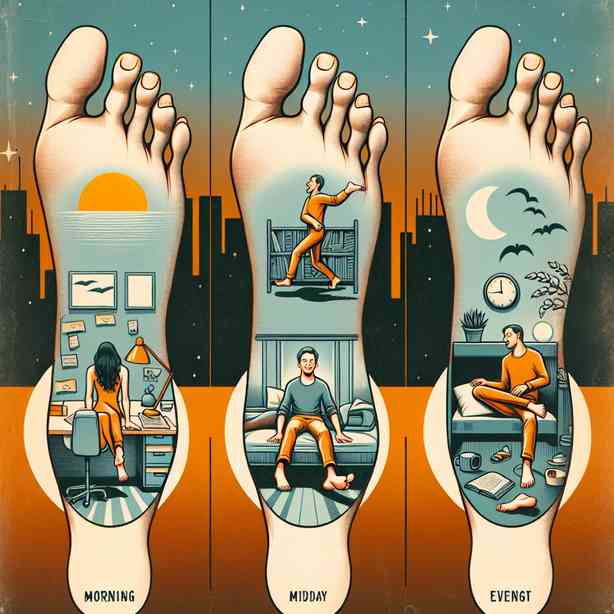
When Your Toes Tell the Whole Story
Toes are often overlooked in our discussions about the human body and health. However, they serve as fascinating indicators of not only our physical well-being but also our overall lifestyle. Believe it or not, the condition of your toes can reveal much about your health, posture, and even your emotional state. The story your toes tell is rich and multifaceted, offering insights that can help you understand and improve your life.
Structurally, our toes consist of bones known as phalanges, which are connected by joints and controlled by a network of muscles and tendons. This unique structure enables our toes to perform essential functions, such as balance and mobility. Each toe plays a role in stability while walking or running, helping to distribute body weight evenly across the foot. As you can see, the design is not just for show; it’s crucial for our daily activities.
Beyond their anatomical role, the health of our toes can indicate various health concerns. For instance, ingrown toenails, bunions, or fungal infections are not just cosmetic issues—they can signal broader conditions such as diabetes or circulatory problems. Individuals with diabetes should particularly be vigilant, as even minor toe injuries can lead to severe complications if not treated promptly.
Moreover, the way our toes function can tell us a lot about our posture. A person with a condition known as “flat feet” might exhibit a collapsing arch that causes the toes to splay outward. This can change how weight is distributed across the foot and how the body aligns when standing or moving. A discrepancy in toe length, such as a shorter second toe, can also reveal information about hereditary traits and even predispositions to certain ailments, guiding us to better personalize our health care strategies.
Beyond physical conditions, our toes may also reflect emotional health. Many people carry tension in their bodies, which can show up in the form of tightness in the toes and foot muscles. Stress can alter our posture, lead to clenching or curling of the toes, and manifest as discomfort. Mind-body practices like yoga and meditation can help alleviate this tension, allowing our toes to relax and align properly.
Practicing foot care is essential for maintaining healthy toes. Regular inspections can help catch issues early on, which is particularly important for individuals with health conditions that affect foot sensitivity. Basic care routines can include washing and drying the feet thoroughly, trimming toenails straight across to prevent ingrown nails, and moisturizing to avoid dry skin and cracking. Choosing footwear wisely—opting for shoes that provide support and do not crowd the toes—can also prevent many common foot problems.
In addition to daily care, engaging in foot exercises can be beneficial. Simple actions like toe stretches, lifts, and gripping exercises can strengthen the muscles in the feet and toes, improving overall foot health and function. This not only aids in injury prevention but can enhance athletic performance as well.
Another area of interest related to foot health is the reflective qualities associated with reflexology, which suggests that specific points on the feet correspond to different organs and systems in the body. By stimulating certain areas on the toes, one might promote healing in other parts of the body, suggesting that the health of our toes is intricately linked to our overall physical health.
Furthermore, there’s a strong connection between our emotional state and foot health. People often describe feeling grounded and stable when their feet are healthy and well cared for. Imagine how you feel walking barefoot on soft grass or warm sand; this connection to nature often improves your mood. Conversely, discomfort in your toes can lead to feelings of distraction and unease, further explaining how vital our feet are in our holistic health.
Research has also begun to recognize the implications of foot morphology on health outcomes. Studies suggest that individuals with certain foot structures may be more susceptible to certain foot-related ailments, leading to the development of personalized footwear to meet unique health needs. This understanding can guide individuals in choosing the best options that align with their particular foot shape and functional requirements, making an informed decision easier.
In conclusion, it is essential to pay attention to your toes, as they provide a window into your overall health. An array of factors—from physical conditions to emotional states—intertwines to tell the narrative your toes convey. By understanding your toes and caring for them diligently, you can take proactive steps in enhancing your physical well-being, emotional stability, and even psychological resilience. Just like a story’s plot unfolds through its characters, so too does the condition of your toes reveal the chapters of your health journey. So, next time you look down at your feet, remember that there is indeed a rich story waiting to be understood, one that can guide you toward a healthier and more fulfilling life.


